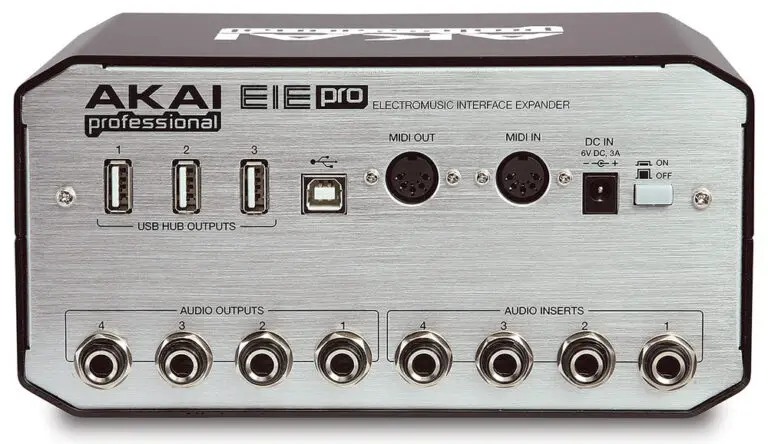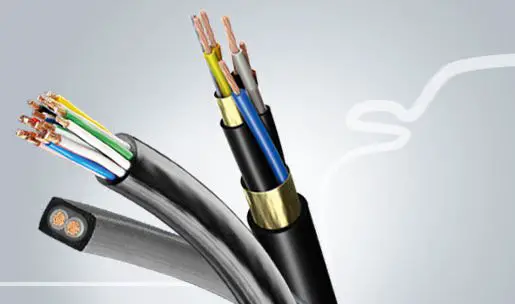Get ready to upgrade your entertainment setup! If you’ve ever asked yourself, “What Are AV Cables?” You’ve definitely come to the right place. These tiny wires hold a world of potential, allowing you to seamlessly connect your TV to all your favorite devices, like gaming consoles and set-top boxes. Keep reading to discover the power of AV cables and how they can enhance your viewing experience.
But, if anyone asks you to pass the AV cable while installing a new device, will you be able to identify it? Well, if you’re unsure, here’s a detailed description, What AV cables are, that you’ll find useful. Also, after giving it a read, you’ll be able to choose the right AV cable for your devices.
What are AV Cables?
AV cable, also known as audio-visual cable, is a cable used to connect audio-visual devices such as televisions, DVD players, gaming consoles, and speakers. The cable transfers audio and video signals between the devices, allowing you to enjoy your favorite content on a big screen.
AV cables come in different types, including composite, component, HDMI, and more, and choosing the right one will depend on the devices you want to connect and the quality of the signal you want to receive.
What Are AV Cables, its Types and How they Work?
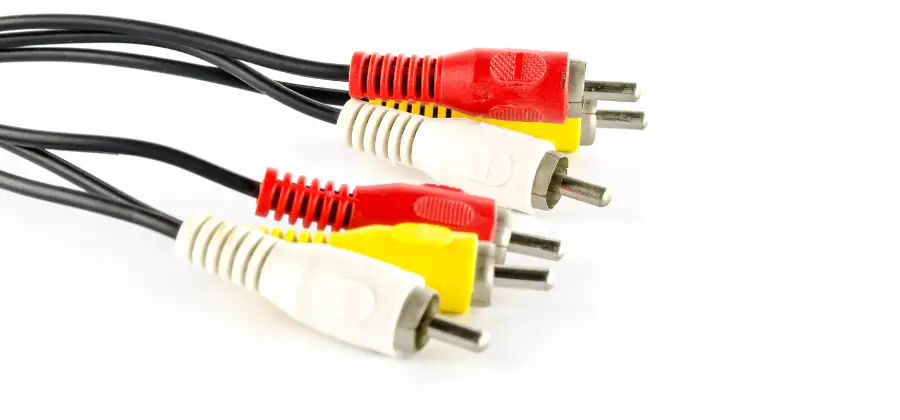
AV cables are a crucial part of any audio and video setup. These cables transmit audio and video signals from one device to another. This article will explore what AV cables are and how they work.
AV cables, or audio/video cables, come in various types and styles. The most common types include:
- HDMI cables
- Component cables
- AV composite cables
1. HDMI cables
HDMI cables are high-definition digital cables that connect devices such as Blu-ray players and cable boxes to a display unit. HDMI cables are capable of transmitting both high-definition video and audio signals. They can transmit other features, such as surround sound and audio return channels.
2. Component cables
Component cables are another popular type of AV cable. These cables use three separate analog cables to transmit video signals in high definition. Component cables can provide a high-quality picture but don’t transmit audio signals. To transmit audio signals, separate audio cables are required.
3. AV composite cables
AV composite cables are a more basic type of cable that uses a single analog cable to transmit audio and video signals. They are commonly used to connect older devices, such as VCRs and older gaming consoles.
Other types of AV cables
Other types of AV cables include:
- Analog cables
- Fiber optic cables
- Coaxial cables
- VGA cables
1. Analog cables
Analog cables transmit audio and video signals in their traditional analog format.
2. Fiber optic cables
Fiber optic cables are used for high-quality audio transmissions.
3. Coaxial cables
Coaxial cables are used for digital audio and video signals.
4. VGA cables
VGA cables transmit video signals from a computer to a display unit.
Factors to Consider When Selecting an AV Cable
One of the most important things to remember when selecting an AV cable is to ensure that the cable is compatible with the devices you are connecting. It’s also essential to select a high-quality cable to ensure optimal picture and sound quality.
All in all, AV cables are essential to any audio and video setup. Many different types of AV cables are available, each with unique features and benefits.
Choosing the right cable for your needs is essential to ensure you get the best possible picture and sound quality.
What is an AV output?
Now, you are probably wondering how these cables work. AV output, also known as audio-visual output, refers to the ports or connectors on an audio-visual device that allow you to output audio and video signals to another device, such as a television or a speaker system.
The signals are then transmitted via an AV cable to the receiving device, where they are processed, displayed, or played back. AV outputs can take various forms, including RCA connectors, HDMI ports, S-Video connectors, and more, and the type of AV output will determine the type of AV cable you will need to connect your devices.
How Does AV Cable Work?
What does all that mean? AV cables transmit audio and video signals from one device to another. The signals are sent from the source device, such as a DVD player or gaming console, to the receiving device, such as a television or a sound system, through the AV cable.
The AV cable typically consists of several smaller wires, each responsible for transmitting a different type of signal. For example, one wire might transmit video data, while another might transmit audio data. The signals are sent in a way that preserves the quality of the original content, allowing you to enjoy high-quality audio and video.
Once the signals reach the receiving device, they are processed and either displayed on the screen or played back through the speakers. The AV cable you use will determine the signal quality, with higher-quality cables typically providing a clearer and more detailed picture and sound.
What are the types of AV cables?
AV cables are available in various types depending on the control signals. One can also distinguish an AV cable from others based on its number of video and sound channels.
Here’s a comprehensive list of all types of AV cables.
RCA Cables

These traditional cables used to be there in our households in earlier days. RCA cables were introduced in 1940 and became very common when it came to connecting televisions with VCRs, cable boxes, and other consoles. The colors of RCA cables are usually yellow, white, and red.
Though the older versions of TVs and other electronic devices featured RCA jacks, they are less common today. That’s because RCA cables can’t deliver high-definition signals. Today, you’ll find HDMI jacks in most electronic devices instead of RCA jacks.
RCA cables are also called F-pin cables. Since the older devices used composite video formats, RCA cables are known as composite cables. Read carefully to learn What are AV Cables.
Watch this video on What are AV Cables:
S-Video Cables

Super-Video or S-Video AV cables were common in older TVs, DVD players, and VCRs. The main functionality of these cables is to break the video data into color and brightness signals. As a result, the video output that it delivers is superior in quality to the RCA cables.
S-Video cables became quite popular, but the technology didn’t sustain for long. As soon as better technology was discovered, the TV brands stopped manufacturing S-Video jacks. But, you can still find these cables if you have older electronic devices in your home or office.
Coaxial Cables

These cables are typically used by the operators of cable TV companies. They can transmit both audio and video from one device to another. For example, you need a Coaxial AV cable to connect your cable box to the cable supplier’s box.
Some users call Coaxial cables RF cables as RF refers to Radio Frequency. From the name itself, you can understand that these cables can transfer from a huge distance. Another popular usage of Coaxial cables is in the cable internet industry.
Component Video Cables
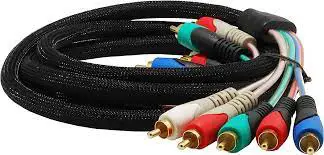
Right after the RCA cables, Component cables were introduced to enhance the video output. These cables look pretty similar to RCA cables. For this reason, it’s really easy to confuse a Component cable with an RCA cable.
But, if you want to identify a Component cable, the trick is easy. These cables are usually found in green, red, and blue colors. But, you won’t see these cables easily nowadays as they were found in older electronic devices.
VGA/DVI Cables

DVI or Digital Visual Interface delivers digital signals from analog ones to provide better picture quality. It’s mostly used in digital and analog monitors. The format in which these cables deliver videos is known as RGB.
The color saturation of VGA/DVI AV cables is much better than the above cables. However, these cables aren’t common nowadays as technology has improved further. But for years, these were the only source of connection between computers and monitors.
So far, you have become aware of AV cables that used to be relevant in the earlier days. And so, you must be now wondering which is the latest AV cable. And the answer is here!
HDMI Cables
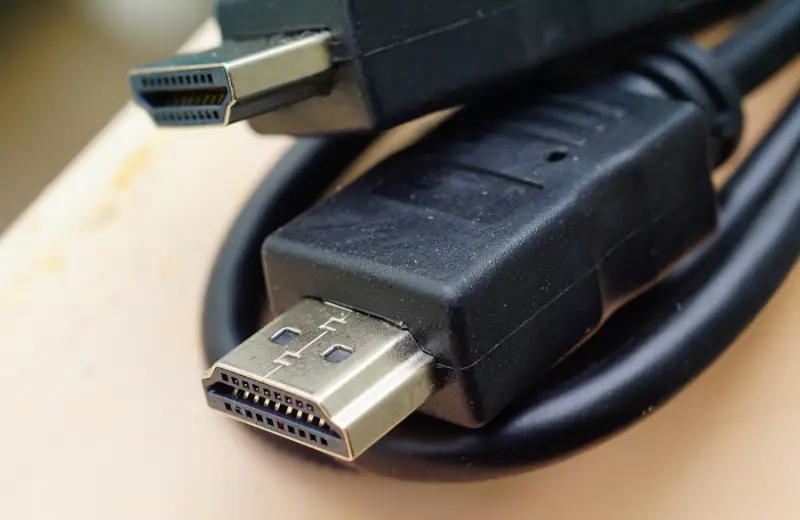
High Definition Multimedia Interface (HDMI). These are the cables that you’ll commonly find in LCD TVs, LED TVs, computer monitors, speakers, gaming consoles, laptops, and even some smartphones. Almost all the brands manufacturing HD TVs use HDMI cable jacks.
What Are The Benefits of HDMI
As the name suggests, HDMI is all about crisp, high-resolution pictures. What HDMI does is that it single-handedly transfers both video and audio signals into these electronic devices. And hence, it has remained the most hassle-free cable for today’s smart users.
HDMI cable can support all the standard video resolutions, including 720p, 1080p, and even 4K. HDMI cables paired with Ethernet cables can additionally provide device networking, provided both of your devices support it. As a result, you can make the most of your entertainment.
More About AV Cables
Let’s dive deeper into the world of AV Cables!
Lighting Digital AV Cables
Lightning Digital AV cables are cables used to connect Apple devices, such as iPhones, iPads, and iPods, to a display, such as a television or a monitor. The cable has a Lightning connector on one end and an HDMI connector on the other, allowing you to mirror the content on your device’s screen on a larger display.
The cable supports up to 1080p HD video and audio, providing high-quality video and sound for your movies, games, and other content. With a Lightning Digital AV cable, you can enjoy your content on a big screen without the need for Wi-Fi or AirPlay.
AV Extension Cables
AV extension cables are cables used to extend the length of an existing AV cable. They have connectors on both ends, allowing you to connect one end of the extension cable to the source device and the other end to the receiving device, effectively extending the reach of your AV cable.
AV extension cables are useful when the distance between your devices is too great for a standard AV cable, or when you need more flexibility in positioning your devices. They are available in various lengths and types, including composite, component, and HDMI, and choosing the right one will depend on the devices you want to connect and the quality of the signal you want to receive.
By using an AV extension cable, you can ensure that your devices are properly connected and that you receive high-quality audio and video signals.
AV Out Cable to HDMI
An AV out cable to HDMI is a cable that allows you to convert analog audio and video signals from an AV out port into digital signals that can be transmitted over an HDMI cable.
This type of cable is useful when you want to connect an older device, such as a DVD player or a gaming console, to a modern television or monitor that only has HDMI inputs. These are for people like me from the “Block Buster Video” generation!
The AV out cable to HDMI typically has a composite video connector (yellow RCA) and audio connectors (red and white RCAs) on one end, and an HDMI connector on the other end.
When the cable is connected to both the source device and the receiving device, it converts the analog signals into digital signals that can be transmitted over the HDMI cable, allowing you to enjoy your content on a big screen with high-quality video and sound.
By using an AV out cable to HDMI, you can enjoy your older devices on modern displays, providing a convenient and cost-effective solution for connecting your devices. Check out Sound Guides to learn more.
Custom AV Cables
Custom AV cables in China refer to audio-visual cables that are manufactured to specific specifications and requirements, such as length, color, and connector type. Companies and individuals in China may order custom AV cables for a variety of reasons, such as for use in commercial installations, for use in specialized equipment, or for personal use.
Remember that we live in a “Global Economy”, and technology varies from continent to continent.
China is a major producer of electronics and cables, and as such, it has a thriving custom AV cable manufacturing industry. Companies in China can offer competitive pricing and quick turnaround times for custom AV cables, making it an attractive option for those in need of these specialized cables.
When ordering custom AV cables from China, it is important to ensure that the manufacturer is reputable and reliable and that the cables meet your specific requirements and specifications. Additionally, be sure to consider any potential shipping and import costs and any potential customs or import duties that may apply.
Conclusion: What are AV Cables
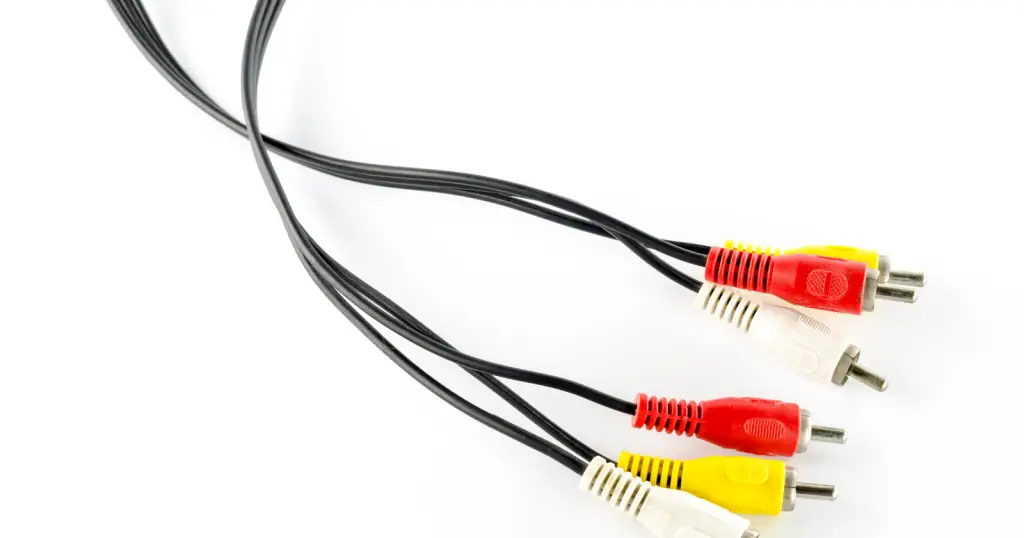
Now that you know What are AV Cables and everything about AV cables and their uses, you’ll surely be able to identify most of them if not all. And in case you’re going to update your cables in a few days, always check which ones your devices use. Otherwise, you’ll end up in utter disappointment for choosing the wrong cable.



